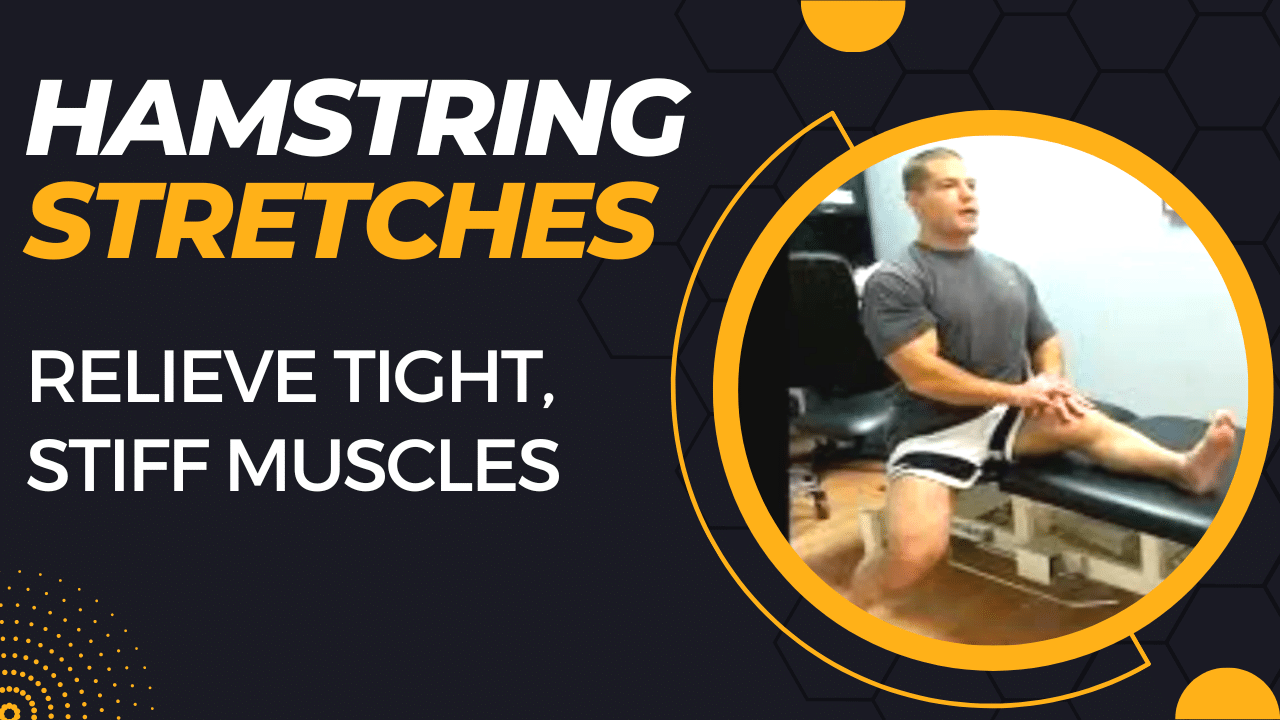Looking For Hamstring Stretches To Help With Back Pain, Sciatica, Or Knee Pain?
Almost EVERYONE thinks they have tight hamstrings. Even gymnasts who can put their foot behind their head sometimes complain "My hamstrings are so tight." However, not everyone needs to stretch their hamstirngs.
This video you'll learn:
- How to tell if you actually need to stretch your hamstrings
- Stretches for tight, stiff hamstrings
- Innovative versions of hamstring stretches you may not have seen before
Click the play button to learn hamstring stretches that actually work
What Are The Hamstrings?
Your hamstrings are actually 3 muscles that are down the back of your legs (2 muscles on the inside and 1 muscle on the outside).
Your hamstring muscles include the:
- Semitendinosis
- Semimembranosis
- Biceps femoris
Most people don't get tight or stiff in their entire hamstring.
It's usually on the inside OR the outside. More commonly than not people tend to get stiff in their inner hamstrings more than their outer hamstrings.
Stiffness in the inner hamstrings can cause all kinds of problems, but probably the most notable one is pain on the inside of the knee.
How Do You Know If You Need To Stretch Your Hamstrings?
In order to determine if you need to stretch your hamstrings, there are 2 different muscle length tests you can perform.
Hamstring Flexibility Test #1
Follow the steps below to see if your hamstrings are actually stiff or short. In other words, do you actually need to stretch them?
- Lay on your back
- Keep back flat against the surface
- Bring 1 knee up to 90 degrees
- Straighten knee out as much as you can
- If you can get close to 90 degrees, then you don't need to stretch
*If you couldn't get your knee to almost to 90 degrees, then the next test is to figure out which hamstring muscles to stretch
Hamstring Flexibility Test #2
Use this test to determine if you need to stretch the inside or outside hamstring muscles.
- Lay on back
- Keep back flat
- Bring 1 knee up to 90 degrees
- Turn knee inward (outside muscle) then outward (inside muscles).
- Whichever way you can't turn your knee far is the muscle you need to stretch
If your hamstrings feel tight, but can reach 90 degrees, you may not need to stretch them.
Muscles can be painful from being too stiff, but they can also be painful from being overly lengthened.
That's actually the definition of a strain: a muscle or tendon that has been overstretched.
Therefore, one of the worst things you can do for a hamstring strain is to further stretch it.
If you do need to stretch your hamstrings, here are different ways to do hamstring stretches:
Hamstring Stretch For The Whole Muscle
- Sit on the edge of a surface (bed, table, couch, etc)
- Have one leg straight out on the surface
- Keep your trunk fairly upright and in a neutral position
- Lean slightly forward
Hamstring Stretch For The Inner Muscles
- Sit on the edge of the surface you chose (bed, table, couch, etc.)
- Have your leg out straight and flat on the surface
- Keep your trunk in an upright and neutral position
- Turn your knee outward
- Lean forward
- Put a little pressure on the side of your knee with your hands
Hamstring Stretch For The Outer Muscle
- Sit on the edge of the surface you chose (bed, table, couch, etc.)
- Have your leg out straight and flat on the surface
- Keep your trunk in an upright and neutral position
- Turn your knee inward
- Lean forward
- Put a little pressure on the outside of your knee with your hands
What Else Can Cause Symptoms Of A Hamstring Strain?
Your sciatic nerve runs down the back of the leg through your hamstring, so if you're feeling pain in the back of your thigh, there's a chance it may be sciatica.
Sciatica can be caused from a back problem such as a bulging, herniated, or degenerative disc.
It can also come from a problem in your hip such as piriformis syndrome.
So if you're having a hamstring problem, it's a good idea to have it checked out.
If you'd like to discover what's causing your hamstring problem, tap the button below to request a Free Discovery Visit with one of our specialists.

